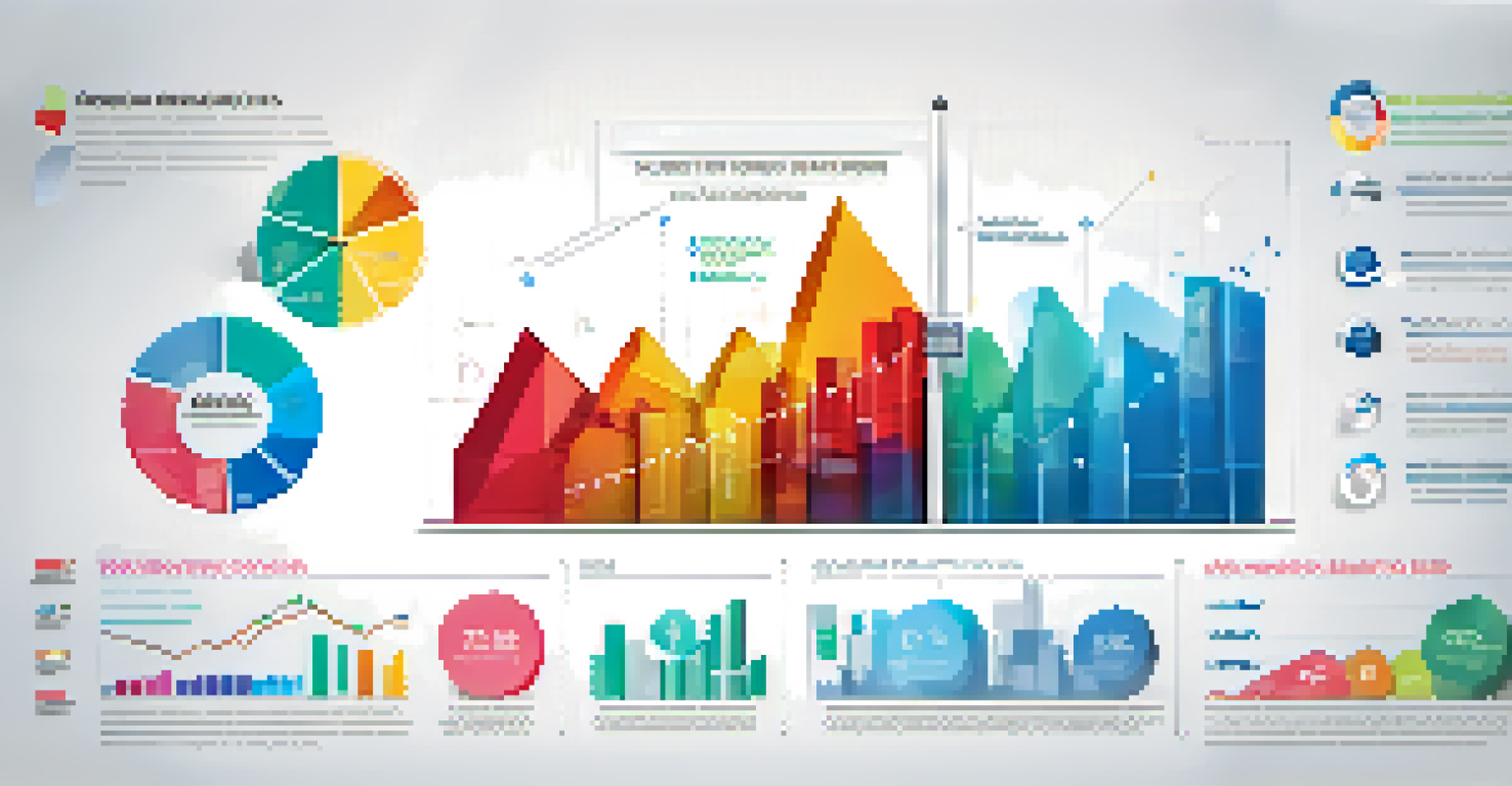Evaluating Impact: Metrics for Measuring Success

Understanding the Importance of Metrics in Evaluation
Metrics serve as the backbone of any evaluation process, helping us quantify success. By using clear and defined metrics, organizations can assess their achievements and areas for improvement. This clarity not only aids in strategic planning but also in communicating value to stakeholders.
What gets measured gets managed.
For instance, think of metrics as a compass; they guide your organization on the right path. Without them, it’s easy to get lost in subjective opinions and unclear goals. In essence, metrics provide a structured approach to understanding your impact.
Moreover, evaluating impact through metrics allows for deeper insights into how resources are being utilized. This enables organizations to make informed decisions, optimize their efforts, and ultimately enhance their effectiveness.
Defining Success: Setting Clear Objectives
Before diving into metrics, it’s crucial to define what success looks like for your organization. Establishing clear, measurable objectives sets the foundation for effective evaluation. Think of it as creating a roadmap; without a destination, it’s challenging to determine how far you’ve traveled.

For example, if your goal is to increase customer satisfaction, specify what that means numerically—perhaps through survey scores or Net Promoter Scores (NPS). This clarity ensures that everyone in the organization is aligned and working towards the same targets.
Metrics Guide Organizational Success
Metrics act as a compass, providing clarity on achievements and areas for improvement.
Additionally, well-defined objectives help in choosing the right metrics for evaluation. When success is clearly articulated, selecting the appropriate tools to measure it becomes a more straightforward task.
Quantitative Metrics: Numbers Tell a Story
Quantitative metrics are those hard numbers that provide concrete evidence of success. These could include figures like sales growth, website traffic, or customer retention rates. They offer a clear picture of performance, making them essential for any evaluation.
In God we trust; all others bring data.
For instance, tracking monthly sales figures can reveal trends over time, helping you understand seasonality or the impact of marketing campaigns. It’s like having a pulse on your business; when you know the numbers, you can make timely adjustments.
However, while numbers are important, they should not be viewed in isolation. Combining quantitative metrics with qualitative insights can provide a more holistic view of your organization’s impact.
Qualitative Metrics: Understanding the Human Element
While numbers are critical, qualitative metrics add depth to your evaluation. These metrics often come from surveys, interviews, or feedback forms that capture the sentiments and perceptions of stakeholders. They help to paint a fuller picture of your organization’s impact.
Consider a nonprofit organization seeking to measure community impact; qualitative feedback from beneficiaries can reveal stories of change that numbers alone cannot convey. This aspect of evaluation highlights the importance of personal experiences and emotional connections.
Define Success with Clear Objectives
Establishing measurable objectives creates a roadmap for effective evaluation and alignment within the organization.
Integrating qualitative insights with quantitative data can provide a richer understanding of success. It allows organizations to resonate more deeply with their audience and adapt their strategies accordingly.
Long-Term vs. Short-Term Metrics: Finding Balance
When evaluating impact, it’s essential to consider both long-term and short-term metrics. Short-term metrics, such as immediate sales results, can provide quick feedback on current strategies. However, focusing solely on these can lead to reactive rather than proactive decision-making.
On the other hand, long-term metrics, like brand loyalty and customer lifetime value, provide insights into sustainable success. These metrics help organizations to strategize for the future rather than just responding to present circumstances.
Striking a balance between the two allows for a comprehensive view of performance. By understanding both immediate and future impacts, organizations can build a resilient strategy that ensures ongoing success.
The Role of Benchmarking in Measuring Success
Benchmarking involves comparing your metrics against industry standards or competitors. This practice helps organizations understand where they stand in their field and identify potential areas for improvement. It’s akin to checking your score against others in a game; it motivates you to strive for better.
For example, if your website’s conversion rate is below the industry average, this insight can prompt a review of your user experience. Benchmarking provides context to your metrics, allowing you to see if your successes are significant or merely average.
Balance Quantitative and Qualitative Data
Combining hard numbers with personal insights offers a comprehensive understanding of an organization's impact.
Moreover, benchmarking can inspire innovation. By observing best practices from top performers, organizations can adopt new strategies and techniques to enhance their impact.
Using Data Visualization for Impact Evaluation
Data visualization transforms complex data into digestible visuals, making it easier to understand and communicate metrics. Charts, graphs, and infographics can reveal patterns and trends that might be missed in raw data. This visual approach engages stakeholders and enhances comprehension.
For instance, presenting sales data through a line graph can quickly show growth over time compared to simply listing numbers. Visuals can tell a compelling story, making it easier to convey your successes and challenges to your audience.

Incorporating data visualization into your evaluation process not only aids in internal analysis but also enhances external communication. Stakeholders are more likely to engage with visually appealing presentations, fostering a better understanding of your impact.